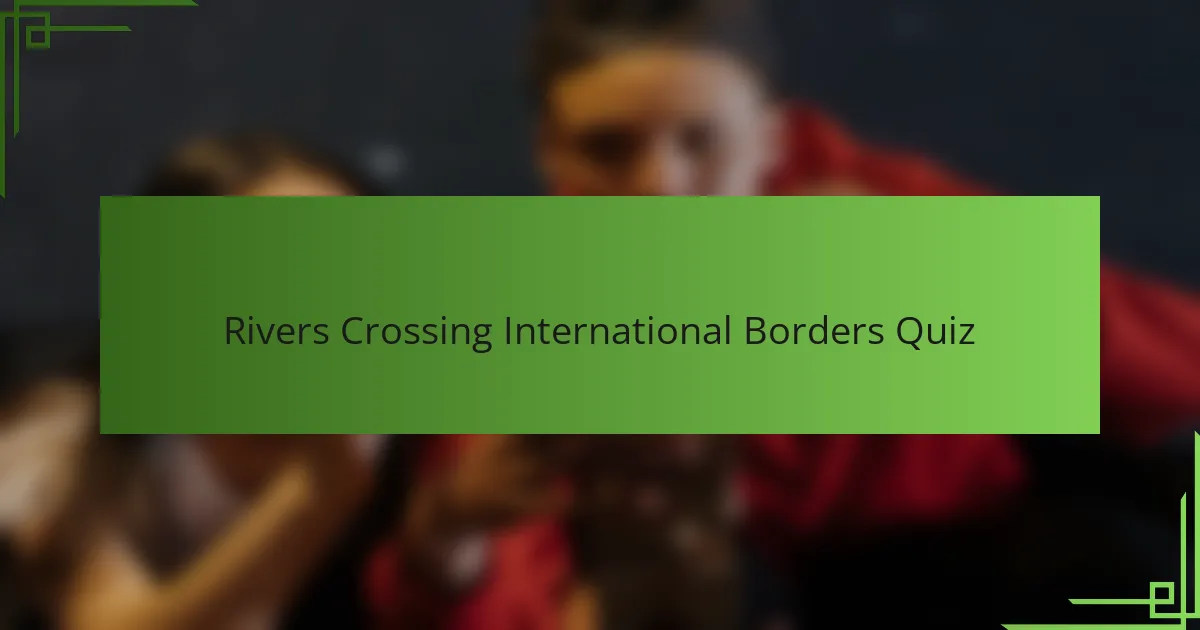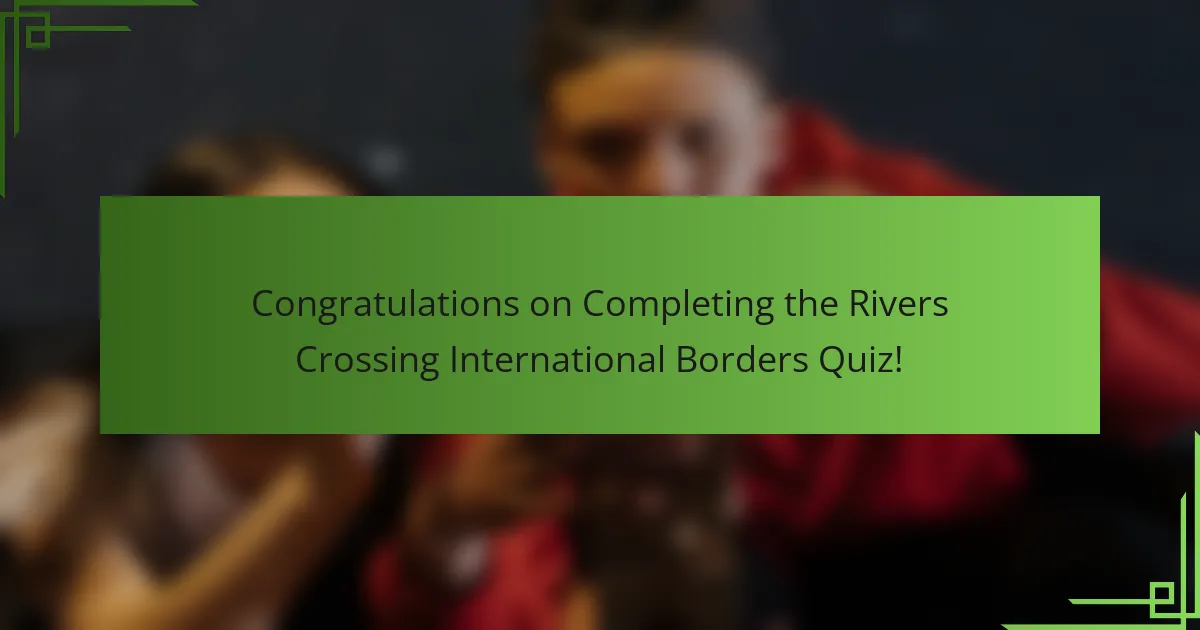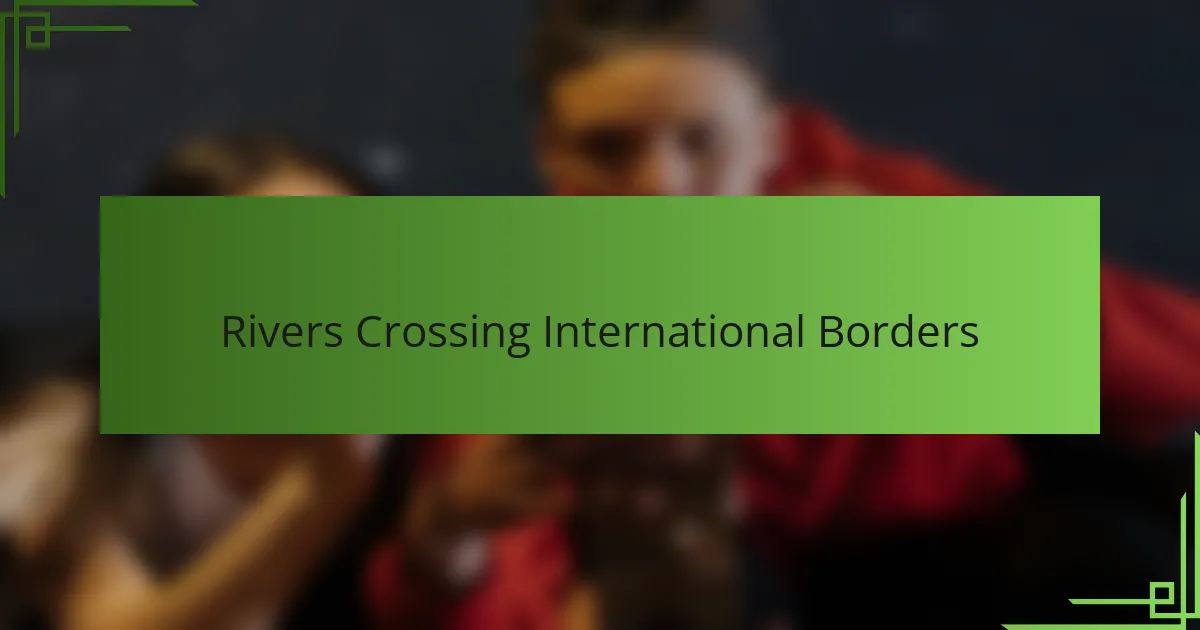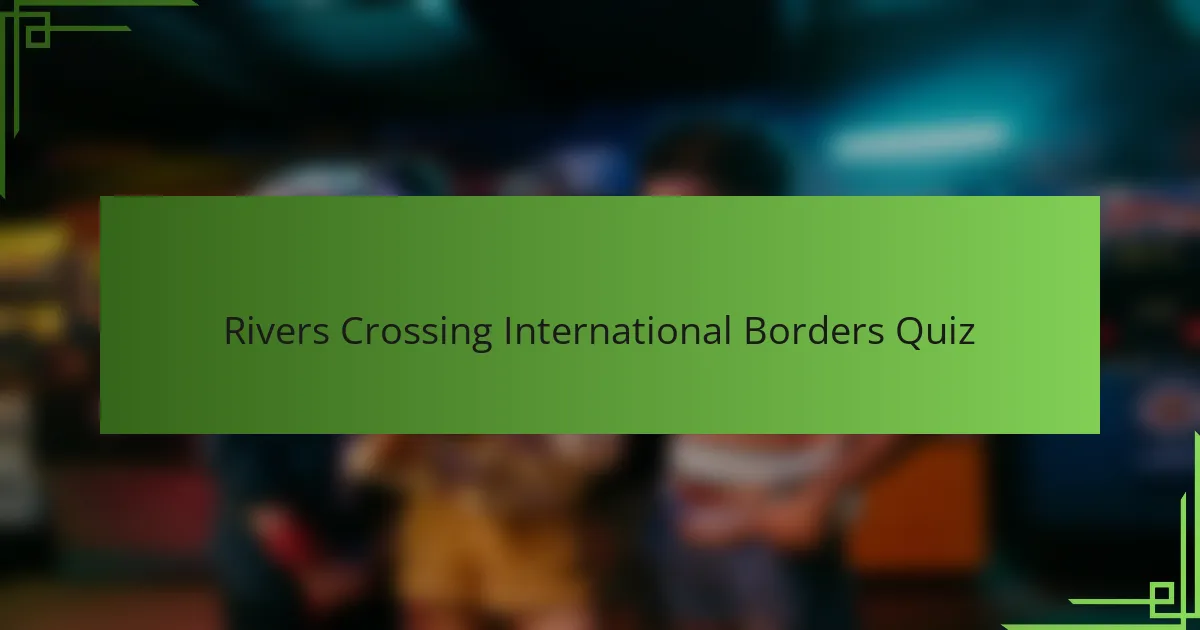
Rivers Crossing International Borders Quiz
1. Which river forms part of the border between the United States and Canada, flowing from the Great Lakes to the Atlantic Ocean?
- Columbia River
- Saint Lawrence River
- Detroit River
- Niagara River
2. The Danube River crosses the borders of how many European countries as it flows towards the Black Sea?
- 9
- 8
- 11
- 10
3. Which river serves as a natural border between Egypt and Sudan?
- White Nile
- Atbara River
- Nile River
- Blue Nile
4. The Mekong River flows through several countries. Name two Asian countries where it acts as an international boundary.
- Laos and Thailand
- Myanmar and Thailand
- Cambodia and Vietnam
- China and Cambodia
5. Which river forms part of the boundary between Brazil and Argentina, including the area near Iguazu Falls?
- Paraguay River
- Iguazu River
- Paraná River
- Uruguay River
6. The Rhine River flows through multiple countries in Europe. Name two countries it borders.
- Germany and Switzerland
- Netherlands and Luxembourg
- Germany and Austria
- France and Belgium
7. Which river acts as an international border between North Korea and China?
- Yalu River
- Amnok River
- Tumen River
- Songhua River
8. The Zambezi River, known for Victoria Falls, crosses the borders of which two southern African countries?
- Mozambique and Angola
- Botswana and Namibia
- South Africa and Lesotho
- Zambia and Zimbabwe
9. Which river runs between India and Bangladesh before emptying into the Bay of Bengal?
- The Ganges River
- The Meghna River
- The Indus River
- The Brahmaputra River
10. The Rio Grande forms part of the border between the United States and which country?
- Cuba
- Mexico
- Belize
- Canada
11. Which river is known for forming the border between Paraguay and Argentina?
- Uruguay River
- Paraná River
- Pilcomayo River
- Paraguay River
12. The Oder River creates a section of the border between which two European countries?
- Germany and Poland
- Austria and Poland
- Germany and Czech Republic
- Poland and Slovakia
13. Name the river that forms part of the border between France and Germany.
- Seine
- Danube
- Loire
- Rhine
14. The Tigris River flows through which two Middle Eastern countries as it crosses international boundaries?
- Turkey and Iraq
- Syria and Lebanon
- Iran and Saudi Arabia
- Jordan and Kuwait
15. Which major river forms part of the international boundary between Venezuela and Colombia?
- The Orinoco River
- The Apure River
- The Magdalena River
- The Amazon River

Congratulations on Completing the Rivers Crossing International Borders Quiz!
Thank you for taking the time to explore the fascinating world of rivers that flow across international boundaries. This quiz challenged you to think about how rivers serve as natural links between countries and the roles they play in geography, politics, and culture. You likely learned about some major rivers and the unique challenges and opportunities they present to the nations they connect.
Understanding rivers that cross borders helps us appreciate their importance in global geography. These waterways shape landscapes, support ecosystems, and influence human activities such as trade, agriculture, and diplomacy. Recognizing how countries manage shared water resources deepens our insight into environmental cooperation and conflict resolution.
To expand your knowledge even further, we invite you to explore the next section on this page. There, you will find detailed information about the major international rivers, their geographic significance, and how different nations collaborate for sustainable management. Continue your journey in geography and deepen your understanding of these vital waterways today.

Rivers Crossing International Borders
Definition and Importance of Rivers Crossing International Borders
Rivers crossing international borders are waterways that flow through or form boundaries between two or more countries. Such rivers hold geographic significance as they influence political boundaries, resource management, and environmental policies. The Danube River, for instance, traverses ten European countries, making it a vital transboundary river requiring international cooperation.
Geopolitical Impact of Transboundary Rivers
Rivers crossing borders frequently create geopolitical challenges and opportunities. Countries must negotiate the use, management, and conservation of shared water resources to avoid conflicts. The Nile River, shared by eleven countries including Egypt and Sudan, illustrates how water rights can impact regional stability and diplomacy.
Role of International Treaties in Managing Cross-Border Rivers
International treaties provide frameworks for cooperation on rivers that cross borders. Agreements such as the Indus Waters Treaty between India and Pakistan regulate water sharing, preventing disputes. These treaties often include provisions for navigation rights, water allocation, and pollution control.
Environmental Considerations in Cross-Border River Management
Rivers crossing borders require joint efforts to address environmental concerns like pollution, biodiversity conservation, and ecosystem sustainability. The Rhine River, flowing through several Western European countries, benefits from collaborative initiatives like the International Commission for the Protection of the Rhine to improve water quality and habitat conservation.
Case Study: The Mekong River and Regional Cooperation
The Mekong River flows through six countries in Southeast Asia, including China, Laos, and Vietnam. Its management involves the Mekong River Commission, which facilitates cooperation on sustainable development, irrigation, hydropower, and fisheries to serve regional interests while managing shared water resources.
What are rivers crossing international borders?
Rivers crossing international borders are natural watercourses that flow through more than one country. These rivers act as physical boundaries or traverse two or more nations before reaching their mouth. An example is the Danube River, which flows through ten European countries including Germany, Austria, and Hungary, demonstrating the characteristic of crossing multiple international boundaries.
How do rivers crossing international borders affect geopolitical relations?
Rivers that cross international borders can create both cooperation and conflict between countries. They are crucial for water resources, transportation, and ecosystems, which require joint management. The Nile River, shared by multiple African countries, illustrates this with ongoing agreements and disputes over water usage rights, proving that such rivers significantly impact diplomatic relations.
Where are significant rivers that cross international borders located?
Significant transboundary rivers are located worldwide, with notable examples in Africa, Europe, Asia, and the Americas. The Amazon River flows through Brazil, Peru, and Colombia in South America. In Africa, the Congo River crosses several countries including the Democratic Republic of Congo and the Republic of Congo, highlighting their geographic locations as critical international waterways.
When have transboundary rivers been a source of international agreements?
Transboundary rivers have been the basis for international agreements since the early 20th century. For instance, the 1909 Boundary Waters Treaty between the United States and Canada established rules for managing shared waters like the St. Lawrence River, proving that international cooperation regarding border-crossing rivers dates back over a century and remains relevant today.
Who is responsible for managing rivers that cross international borders?
Management of rivers crossing international borders is typically the responsibility of the countries sharing the river, often coordinated through international commissions or treaties. The International Commission for the Protection of the Rhine is an example where Germany, France, Switzerland, and other nations collaboratively manage the Rhine River’s water quality and resources, reflecting the shared responsibility among riparian states.
